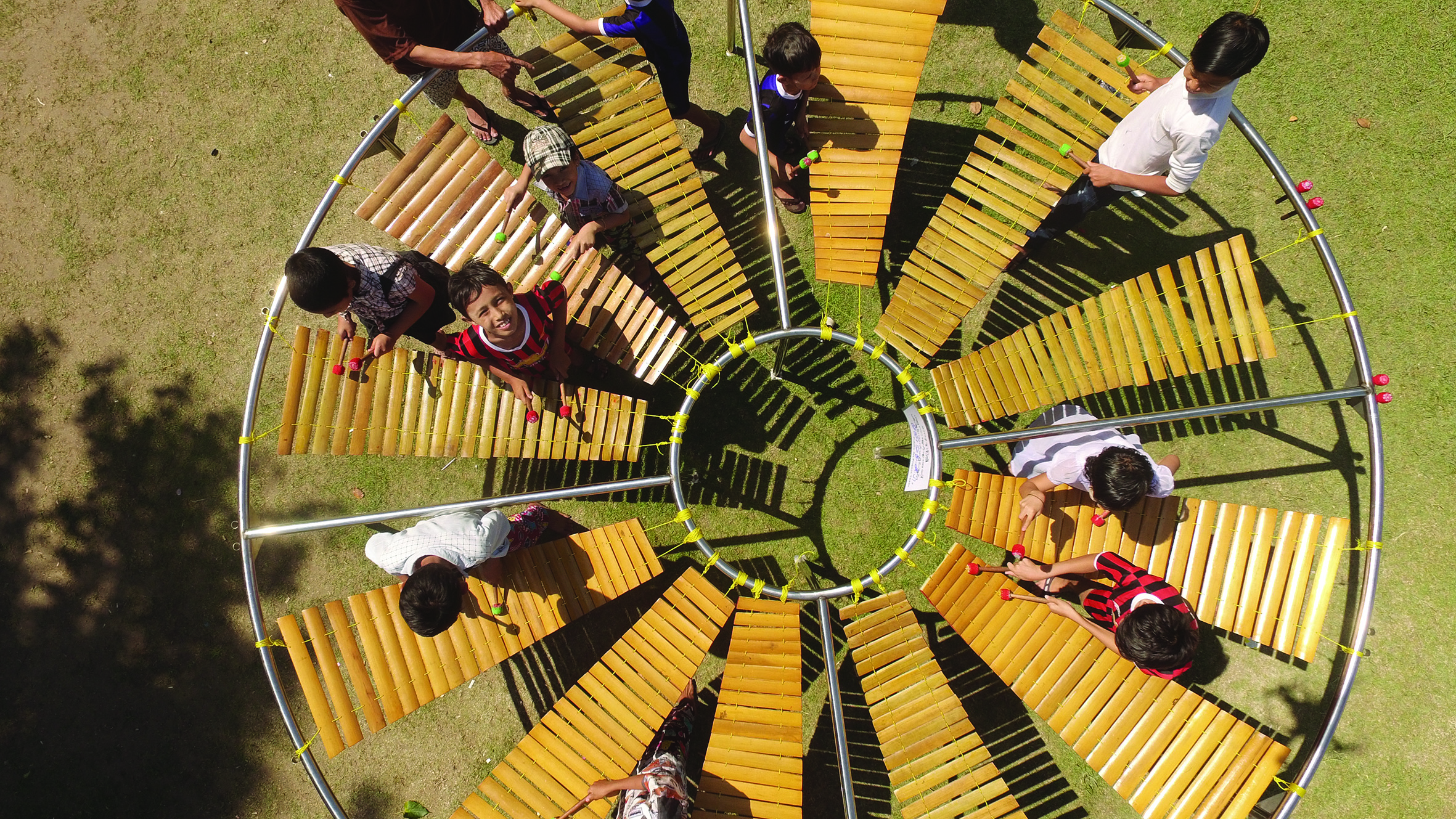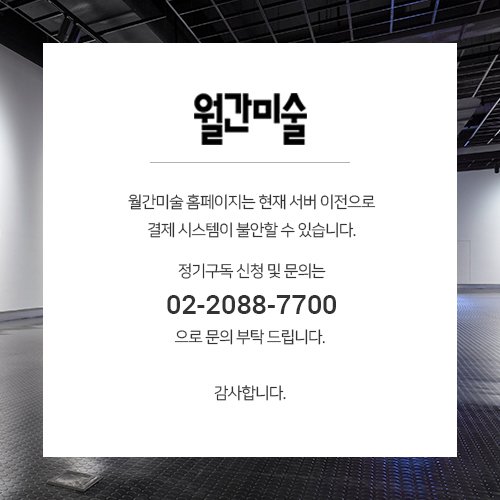
미술이 억압에 맞서 연대하는 방법 1
막을 수 없는 한 걸음: 봄의 혁명 그리고 2021년 미얀마 예술계 상황
아웅 미야 테
전지구 수위의 코로나19 팬데믹은 전 세계 사회와 경제에 영향을 끼쳤다. 미얀마의 모든 화랑이 임시로 문을 닫아야 했을 때, 우리는 온라인 미디어를 통해 예술을 전파했다. 우리는 팬데믹 상황이 야기한 어려움에 대응하면서 일상과 멀어지면 멀어질수록, 회복의 시기가 더 가까워지기를 바랐다. 하지만 그 시점에 미얀마에서는 또 다른 인간의 우매함이 만들어낸, 독재와 군부의 무책임한 쿠데타라는 커다란 물결이 전국을 휩쓸게 됐다.
지역적 맥락의 소개: 근대성이 강조되는 미얀마의 예술
동남아시아의 풍성한 문화유산을 지켜온 나라로서, 미얀마의 예술은 높은 수준의 역사적 가치를 간직하고 있다. 하지만 그것이 문화 정체성을 재현하기 위해 존재하는지 아니면 사회학적 다양성을 위해 존재하는지는 분명하지 않다. 전통적 예술은 삶을 치유하는 마음의 평정을 다루고 미학을 우선시하며, 전통 예술계는 근대미술과 마찬가지로 정치 문제들로부터 거리를 둔다. 하지만 “예술은” 여러 가지 측면에서 사회적이고 정치적인 이슈들과 공명하기 위한 도구이기도 하다. 그렇기에 이는 전통적인 순수예술 분야와 충돌한다. … 60년이 넘도록 폐쇄적인 시스템을 지나오면서, 미얀마는 지금까지 최소한의 진보를 이뤘을 뿐이다. 우리는 아직도 독재에서 멀어져 민주주의로 향하려고 시도하고 있다. 21세기 기술로 도약하려는 몸부림으로 미얀마 예술계는 발전하고 있지만, 여전히 미약하다. 현재 예술의 발전은 두 가지 실천으로 나뉜 듯하다. 한편으로는 공동체적 성격을 가진 독립 예술이 있고 다른 한편에는 정부가 주도하는 프로파간다적 시스템을 따르는 예술이 있다. 정부 정책은 새로운 방법의 시도나 특정 이데올로기를 조장하는 것도 아니고, 예술을 국제무대에 소개하려고 하지도 않는다. 정부의 문화예술 정책도 적절한 것이 없고 심지어는 근대적 교육방식을 예술 교육에 적용하지도 않아, 미얀마에는 순진무구한 아름다움이나 낡은 이데올로기를 제시하는 사회주의의 선동적 예술로 가득하다. 한편, 전통 예술의 바깥은 훨씬 열린 분위기로 흐르고 있으며 현대미술의 흐름에 천천히 진입하고 있다. 2015년에서 2020년에 해당하는 최근 미얀마 예술은 전지구적 네트워크와 연결이 이루어지면서 발전하고 위상이 높아지고 있다.
혁명 이후의 예술적 자유를 향해서
최근 양곤에서는 저녁이 되면 보도나, 다리, 공공장소에서 사진이나 비디오를 상영하는 모습을 볼 수 있다. 이는 쿠데타에 반대하는 젊은 양곤 작가들이 벌이는 항의집회의 모습이다. 그들은 밝은 붉은색을 포함한 이미지를 투사하면서, 한낮의 집회 인파가 어땠는지, 그리고 그들의 열기가 얼마나 맹렬했는지를 사람들에게 알린다. 이들이 조만간 창작의 자유로 충만한 미얀마의 미술 현장을 이끌어가리라고 예측하는 것은, 지금 확실한 것이 아무것도 없음에도 어려운 일이 아니다. 기개로 충만한 아이디어와 이를 지지하는 행동들이 예술적 자유를 향한 우리의 도정에 힘을 더하고 있다. 이들에게서 공공 미술제, 기금 모금, 자유 아트페어, 그리고 워크숍, 큐레이터 프로젝트 등의 국제 교류까지 포괄적인 활성화 전략을 기대할 수 있을 것이다. 학교제도가 붕괴했음에도 불구하고 예술가들은 나아가고 있으며, 그들의 미래를 다시 쌓아나갈 것이다. 나는 이러한 상황이 미얀마 예술의 새로운 시대를 창조하리라 믿는다.
Unstoppable footsteps:
Spring Revolution and the condition of Myanmar art scene in 2021Aung Myat Htay
Firstly may I say thank you to Monthly Magazine for allowing me to this partially discuss the current situation of Myanmar. Also like to express my gratitude to the people of South Korea for standing with us.
As we all know, the global pandemic of COVID-19 has affected the socio-economic all over the world. When all galleries temporarily closed on-ground, all of the art spread online media that we haven’t ready yet to new technologies. We confronting with many challenges to be able to create new opportunities. The farther away we go, the more we want get closer. Unfortunately meantime in Myanmar, another big wave hit the whole country, that by the stupidity of man-made disasters of tyranny and irrationality military coup.
Introduction Local Contexts: modern accent in Myanmar art
A country by the rich of cultural heritage in SEA, art has a level of historical values. However, it is not clear whether it exists as representing to cultural identity for its diverse sociology. Mostly in art is a way of prioritizing aesthetics on peace of mind to healing of life. But on the other hand ‘Art’ is a tools to resonate of the social and political issues in many ways that is contrary with traditional fine art scene. Both of these are still gaining attentions in the local art lovers. The traditional art away from the political and critical issues, when Modern Art is does. We should clarify that Myanmar people’s understanding of modernity is different from their understanding on Modern art. Modernity can be seen as a more comfortable life and inventions of useful devices, such as using latest technology. However, in approached to Modern art, does not seem to see practical and useful facts, but rather a way of portraying mindfulness or religious approach of emotional sufferings. Technically, there has much influences of Western art practices like other Asian countries such as Cubism and Surrealism, but in Myanmar most are indescribable vibes rather than an invention of idea.
More than sixty years of closed-door system the country goes to least developing until now. We are still to trying to step away from dictatorship to democracy. The shaking of leapfrog undergoing to the 21st Century technologies, the development of art scene is rising but still critically weak. The development of art may seen divided into two parts: one is independent art community and the other is government’s propaganda system. Government policy does neither encourage new methods and ideologies nor international exposures. There are no proper state art & culture policy even no modern teaching methods in the art education. There is full of socialist propaganda just shown innocent beauties and old aesthetics ideologies. In the outside of traditional art, the reseems to be more opennes sand becoming slowly into contemporary trends. Today from 2015 to 2020, Myanmar art become more developed and roses due to the links of global networks.
Yangon: city of opportunity and a core of art scene
Yangon is a city, which means no enemies, but now there are bloody uprisings fall. When the art scene here not yet recovered since impact of the COVID-19, along with other businesses. Meanwhile, artists, art professions and scholars are their fierce oppositions turned to the creations of revolutionary. Art is an emotional resonance of people, it’s light-up the community to see the right ways. This concept is effect of the Spring Revolution, “we strongly condemn the actions of the military, we will fight until dictatorship end.” Myanmar artists and collectives created the Raise 3 Fingers project response to reject coup and spread of Myanmar’s voices internationally. Most of remarkably creative ideas for protesting strategy by Myanmar Gen-Z artists were popular trends in the world news. It may be hesitant to keep up with the rapid global movement. Yangon does not silence for long, to ready for every changes by the diversity of ethnicity and culture. The Spring Revolution, which is still gaining momentum, even it costs of blood and sweat but sure to bring us to new era. Guiding us to new era of creativity and where we can struggle to reconstruct our new art system. As responses from my experience, I was organized an online program for SOCA in 2020 titled is “What the Way We Lived in Social Distancing” for those who want to learn in new media art for a while. From this program, most young people have desire to face the problem, contradictions, conflict and chaotic of present in the community. I heard their inner voices that they did not usually say, is express not only about the present, but their future ambitions.

쿠데타에 반대하는 양곤의 젊은 예술가들이 항의 집회의 일환으로 건물에 자신들의 작품 이미지를 쏘아올리고 있다. ⓒ Eaiddhi / 100 Projectors
Hoping towards the post-Revolutionary artistic freedom
Recently, in the evenings of Yangon city, we saw some video slides images on pedestrian, bridges and public area. These are anti-coup protest movement created by young artists of Yangon. Flashing in bright red images shown how people are intense desired and flashback of daytime protest crowd. Artists have been able to use technology and ideas in a timely manner to motivate the public. This is a foregone conclusion that they will soon lead the art scene with freedom of creativity even uncertainty right now. Presently, most of energized ideas and supporting gestures are being forced toward our artistic freedom. That can be expected to all-inclusive revitalization strategy like public art festival, fundraising, free art fare and international exchange such as workshops and curatorial projects. Let say, the state of contemporary Myanmar art, which has been developing steadily followed to the neighboring countries, but unfortunately all of that conditions has suspended halt due to the military coup. So, art has become a priority for anti-authoritarianism. Despite the broke-down of academic institutions, artists are moving forward and they will rebuild their future. I believe that this will create a new era of Myanmar art.
My personal practices: Ongoing and the past works
My initial approach is the identity of being Burmese and curiosity to culture and origin. For more than a decade, I have shifted from my past craft-man to focus on broader and deeper aspects of contemporary art. I used to multi-disciplinary media and techniques instead of old practice. For example I was created a public installation work for the Yangon Art & Heritage Festival 2017.
The title of the work is 〈Your sound is my sound〉, is to create a social instrument that audience can join to harmonizes with social re-construction as a sharing of voices. Using the Burmese instruments the work setup with twelve of bamboo xylophone has been a favorite of young people in the festival. That’s a first kind of public art in Yangon, such an example of participatory installation. Recently something different, I created a site specific installation called 〈Are we in a fail state〉 in 2018. The work make by textile cutting shapes of the protest people marching upside down. You can only see the truth in the reflection of the floor. This is to make the viewer think between the real and the imaginary revolution.
Currently, my ongoing work is just say 〈Artist is walking〉 an exploring on surface of the Earth via Goggle Map. Contemplating the terrain makes us think about the world we live in and reflect on our human nature. The image above is a 9-foot-long canvas, a self-created document in February and March, showing lines are maps of four rivers in Myanmar. It is a simplistic move for the days of silence at home, but it is a concentration of the motivation to go forward. As conclusion, I reveled the ‘Diversity’ is a basic philosophy of my art, I feel basic phenomena of our life could be a great work of art in some ways. That is also my curatorial basic as a sense of diversity into simplicity same as what is need of Myanmar art scene to be re-unite, re-simplify and reconstruct of social political infrastructures.

Aung Myat Htay 〈Your Sound is My Sound〉 public instrument cycle xylophone Installation at 〈My Yangon My Home Arts and Heritage Festival〉 2017

Aung Myat Htay 〈Are we in a fail state〉 Installation at SOCA space 2018
아웅 미야 테(Aung Myat Htay)는 양곤에서 활동한다. 양곤 국립예술문화대학에서 조각을 전공했다. 2015년 대안적인 현대미술 교육 공동체 소카 미얀마(Soca Myanmar)를 설립했다. 최근 개인전 〈현실 의식〉(2019, Myanm/art Gallery Space, 양곤)을 열었으며, 〈유령과 외계인: 보이지 않는 타인〉(2020, Richard Koh Fine Art Gallery, 말레이시아), 한국‧미얀마 미술 교류 프로젝트로 기획된 전시 〈Touch〉(2012, New Zero Art Space, Myanmar) 등 다수의 기획전에 참여했다. 2014년 뉴욕 아시아컬처카운실 그랜트를 수상하고 레지던시 프로그램에 참여했다.
《월간미술》6월호 특집기사 〈미술이 억압에 맞서 연대하는 방법〉
© (주)월간미술, 무단전재 및 재배포 금지








